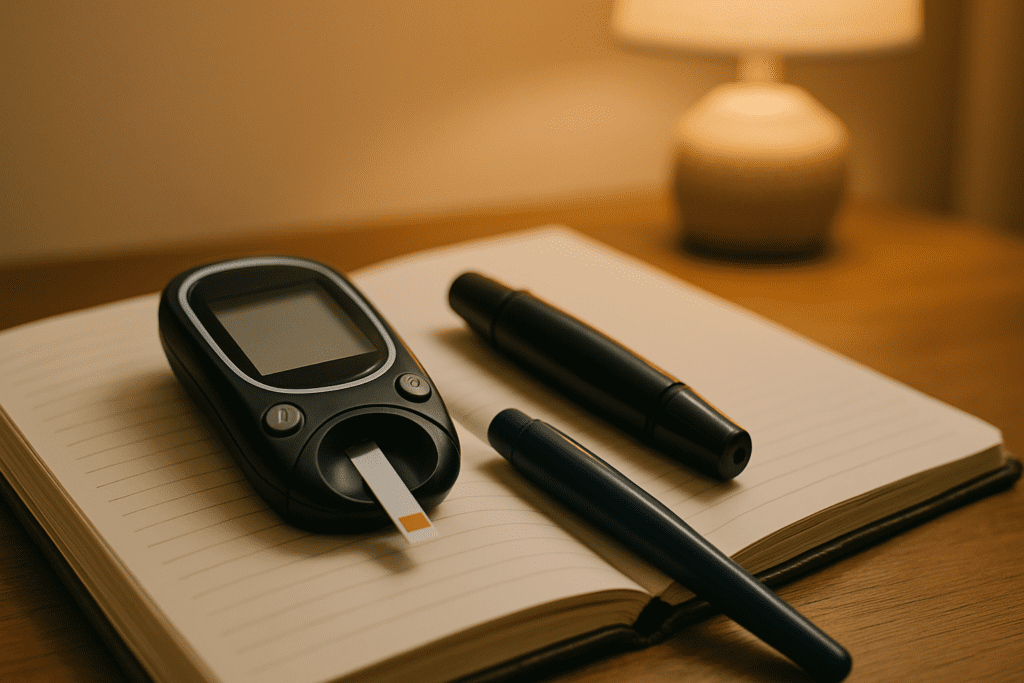Seizures are one of the most alarming medical emergencies anyone can experience or witness. When they occur in the context of diabetes, they can signal a complex interaction between glucose regulation, brain function, and the body’s emergency response mechanisms. But can diabetes cause seizures directly, or are diabetic convulsions the result of something more nuanced beneath the surface? Understanding how blood sugar extremes impact the brain, what a diabetic seizure looks like, and how to respond in an emergency is vital—not only for those living with diabetes but also for caregivers, medical professionals, and the general public. This article explores the science of diabetic seizures in detail, debunking myths and clarifying when these events become life-threatening. We’ll unpack what causes convulsions in the diabetic population, the medical circumstances under which they occur, and what evidence-based care looks like when every second counts.
You may also like: How Diabetes Affects the Brain: Understanding Brain Fog, Memory Loss, and Mental Confusion from High Blood Sugar
The Brain and Blood Sugar: A Delicate Balance
The brain depends almost exclusively on glucose as its primary energy source. Even brief periods of low or high blood sugar can disrupt its function. In a healthy body, insulin and other hormones work in concert to keep glucose levels within a narrow, stable range. But in people with diabetes, especially those requiring insulin or oral hypoglycemic agents, this regulatory system becomes vulnerable to extremes.
Hypoglycemia—defined as a blood glucose level typically below 70 mg/dL—can impair cognitive function, affect judgment, and in more severe cases, induce confusion, unconsciousness, or seizures. The reason lies in the brain’s inability to store glucose. Without a continuous supply, neurons become electrically unstable, triggering abnormal bursts of neural activity that result in seizures. Hyperglycemia, although less commonly associated with seizures, can also lead to severe neurological consequences in extreme forms such as diabetic ketoacidosis (DKA) or hyperosmolar hyperglycemic state (HHS). These events shift the brain’s internal environment, leading to swelling, inflammation, and potentially convulsions.
So, can diabetes cause seizures? The answer is yes—but not in a simplistic or automatic sense. Seizures are not a routine symptom of diabetes, but they are a serious risk under specific, preventable circumstances tied to mismanaged glucose levels. Recognizing these risks is the first step toward preventing diabetic seizures and protecting brain health.

Hypoglycemia and Seizures: A Dangerous Link
Of all the metabolic complications linked to seizures in diabetes, hypoglycemia is the most direct and dangerous. When blood sugar drops too low, the brain essentially begins to starve. The neurons, starved of fuel, malfunction. If untreated, this can lead to seizures and eventually coma. For individuals with type 1 diabetes, this risk is especially high due to the lifelong reliance on exogenous insulin. Insulin therapy doesn’t just lower blood sugar—it can sometimes lower it too far, especially if paired with missed meals, increased physical activity, or dosage errors.
What does a diabetic seizure look like in the context of hypoglycemia? These episodes often begin with early warning signs: shakiness, sweating, anxiety, irritability, and confusion. If not addressed quickly, these can progress to muscle twitching, involuntary movements, and ultimately, full-body convulsions. In this state, the person may lose consciousness, fall, or exhibit repetitive jerking movements. This neurological emergency is frightening, but it also highlights the urgent need for early recognition and fast-acting treatment, such as glucose gel or an emergency glucagon injection.
For those living with diabetes, especially insulin-dependent diabetes, it’s crucial to understand how quickly blood sugar can plummet and lead to dangerous consequences. A missed meal, an unexpected workout, or even a delayed snack can cascade into a life-threatening episode of diabetic convulsions. Caregivers and family members must also be trained to recognize the signs and act swiftly, as the window for reversing hypoglycemia-induced seizures is often very narrow.
Hyperglycemia and Seizures: Less Common, Still Critical
While hypoglycemia is the more notorious culprit, it’s important to explore whether high blood sugar can trigger seizures. The answer is yes, though it’s considerably less common. Seizures associated with hyperglycemia typically occur in the context of diabetic emergencies such as DKA or HHS. In these conditions, blood sugar levels can rise above 600 mg/dL, leading to profound dehydration, shifts in blood pH, and dangerous electrolyte imbalances. These physiological changes create a hostile environment for the brain, disrupting neuronal communication and potentially inducing seizures.
In cases of HHS, the dehydration can be so extreme that it leads to cerebral edema, or swelling of the brain. This complication, although rare, is one of the most severe and difficult to treat causes of diabetic convulsions. Electrolyte imbalances, particularly involving sodium and potassium, further contribute to the destabilization of neural activity. Though seizures in hyperglycemia are less dramatic than those seen in hypoglycemia, they are no less dangerous—and often harder to detect early.
Does diabetes cause seizures in these scenarios? Not directly. Rather, it is the secondary complications of unmanaged high blood sugar—such as DKA and HHS—that create the conditions in which seizures can occur. These emergencies require hospitalization, intravenous fluids, insulin therapy, and continuous monitoring. They are not conditions that can be safely managed at home, underscoring the importance of early detection and routine blood sugar monitoring, especially during illness, stress, or dietary changes.
Nocturnal Seizures and the Hidden Risk
One of the most overlooked aspects of diabetic seizures is their tendency to occur during sleep. Nocturnal hypoglycemia is a documented phenomenon, particularly in individuals taking long-acting insulin formulations or those who exercise vigorously late in the day. During sleep, a person may not recognize the early signs of low blood sugar, allowing it to drop precipitously without intervention. In some cases, the first sign that something is wrong may be waking up confused, soaked in sweat, or not waking up at all—sometimes due to a seizure that occurred overnight.
What does a diabetic seizure look like during the night? These episodes often manifest as bed-wetting, biting the tongue, waking up disoriented, or being found in an unresponsive state. Because they occur out of sight, nocturnal diabetic seizures can go unnoticed until serious harm has already been done. In rare but tragic cases, this leads to what is known as “dead-in-bed syndrome,” a sudden unexplained death in otherwise healthy individuals with type 1 diabetes, believed to be linked to unrecognized nighttime hypoglycemia and cardiac arrhythmias.
To reduce the risk, patients are often advised to monitor their blood sugar before bed, avoid excessive alcohol or exercise late at night, and consider using continuous glucose monitors (CGMs) with alarms. These devices can alert both the individual and caregivers to dangerous blood sugar trends during sleep, making them a critical tool in seizure prevention.
Risk Factors That Increase the Likelihood of Diabetic Seizures
Not everyone with diabetes is at equal risk of developing seizures. Certain factors significantly increase susceptibility, making proactive management even more essential. One such factor is a history of frequent hypoglycemic episodes, especially those requiring assistance from another person. Repeated episodes can dull the body’s natural warning signals—a condition known as hypoglycemia unawareness—which increases the risk of severe episodes that lead to unconsciousness or seizures.
Longer diabetes duration is another risk factor. Over time, the body may experience autonomic neuropathy, a complication that affects the nerves regulating blood sugar awareness, heart rate, and blood pressure. This disruption can make it harder for individuals to detect or respond to blood sugar fluctuations. Advanced complications such as kidney disease can also interfere with insulin clearance, increasing the risk of both hypo- and hyperglycemia.
Medication errors are a preventable yet common cause of diabetic seizures. These may include incorrect insulin dosing, mixing up long-acting and short-acting insulin, or not adjusting medications during illness or fasting. Alcohol consumption, which inhibits the liver’s ability to release glucose, can exacerbate these risks, especially when consumed without food.
Even psychological factors like depression or burnout can indirectly contribute to seizure risk by reducing a person’s capacity to self-monitor and maintain regular treatment routines. Recognizing these risk factors is not about instilling fear—it’s about empowering people with diabetes to take proactive steps that reduce preventable complications.
What to Do During a Diabetic Seizure
Witnessing a seizure is terrifying, especially when the person affected has diabetes. Immediate action is crucial, but it must be appropriate. The first rule is not to panic. Ensure the person is in a safe environment where they won’t injure themselves—gently guide them away from furniture or sharp objects. Do not put anything in their mouth, contrary to outdated myths.
If the seizure lasts longer than five minutes, or if the individual does not regain consciousness, emergency medical services must be contacted immediately. These could be signs of prolonged or recurrent seizures, known as status epilepticus, which require immediate hospital care. Administering a glucagon injection during a suspected hypoglycemic seizure may help if the person is unconscious and cannot take oral glucose, but this should only be done if you are trained and have the proper equipment.
After the seizure, once the person regains consciousness, monitor their breathing and mental status closely. Do not offer food or drink until they are fully alert, as this poses a choking hazard. Keep a record of the event, including timing, suspected triggers, and response measures, as this information is critical for future medical management. Recognizing that even a single episode of diabetic convulsions can indicate a broader issue with glucose management is key to preventing recurrence.
Can a Diabetic Seizure Kill You?
This is one of the most urgent and difficult questions to confront. The short answer is yes—a diabetic seizure can be fatal under certain conditions. If prolonged, the seizure can lead to brain damage, aspiration pneumonia, cardiac arrest, or a coma. When caused by severe hypoglycemia, the brain’s energy deprivation can result in irreversible injury if not corrected promptly. In cases of hyperglycemia-related seizures, the underlying metabolic crisis, such as DKA or HHS, can progress to multiorgan failure if untreated.
That said, most diabetic seizures are preventable with vigilant glucose monitoring, patient education, and access to emergency treatment. The tragedy lies not in the seizures themselves but in the failure to recognize the warning signs early enough. Can a diabetic seizure kill you? Yes—but more importantly, understanding what causes them and how to intervene can dramatically reduce that risk.
The Importance of Medical Follow-Up and Prevention Strategies
After any diabetic seizure, medical follow-up is essential. This is not merely about checking vital signs or glucose levels—it’s about reviewing the entire treatment regimen. A healthcare provider will likely assess insulin doses, meal plans, activity levels, and any recent illnesses that may have disrupted glucose control. Continuous glucose monitoring, insulin pump therapy, or adjusting the timing and type of insulin may all be part of the strategy moving forward.
Preventing future seizures involves more than managing the moment; it requires a systemic approach to diabetic care. Nutrition counseling, stress management, medication adherence, and sleep hygiene all play roles. In cases where hypoglycemia unawareness is present, patients may be advised to intentionally run slightly higher glucose levels for a period to restore the body’s natural alarm signals.
Family members and caregivers should also be trained in seizure first aid and how to administer emergency medications like glucagon or call for help. Schools, workplaces, and community centers should be educated about the potential for diabetic convulsions and what to do when they occur. Prevention is a collective effort that extends beyond the individual with diabetes.

Frequently Asked Questions About Diabetic Seizures
1. Can emotional stress trigger a diabetic seizure?
Yes, emotional stress can significantly impact blood glucose levels, potentially contributing to a diabetic seizure. Acute stress elevates cortisol and adrenaline, which can lead to sharp spikes or drops in blood sugar. In individuals with poorly managed diabetes, this hormonal response may destabilize glucose control to the point of inducing diabetic convulsions. While not a direct cause, stress acts as an amplifier of underlying vulnerabilities. Understanding how emotional states influence glycemic variability is critical for those asking, “can diabetes cause seizures?”—the connection is complex but medically recognized.
2. What does a diabetic seizure look like in real-life situations?
In real-world contexts, what does a diabetic seizure look like? It often begins with confusion, slurred speech, or unresponsiveness—especially in hypoglycemic episodes. Muscle twitching or full-body diabetic convulsions may follow, closely resembling epileptic seizures but driven by blood sugar imbalances. In some cases, individuals may act erratically or aggressively before losing consciousness, which can be misinterpreted as behavioral rather than medical. Recognizing these signs early—especially in public or high-stress settings—is crucial for timely intervention and differentiating from neurological seizure disorders.
3. Can a diabetic seizure kill you even with prior warning signs?
Unfortunately, yes—if not managed quickly and correctly, a diabetic seizure can escalate to fatal outcomes. Asking, “can a diabetic seizure kill you?” reflects a valid concern, especially when seizures occur at night or in isolation. In severe hypoglycemia, the brain is deprived of glucose, leading to permanent neurological damage or death if untreated. The presence of warning signs—such as confusion, dizziness, or abnormal heart rate—provides a narrow window for action. Emergency preparedness, such as having glucagon kits and trained family members, significantly reduces the risk of a lethal outcome.
4. Are there differences between diabetic convulsions during sleep versus while awake?
Yes, diabetic convulsions can present differently depending on the time of day. Nocturnal seizures often go unnoticed, increasing the danger of hypoglycemia-induced coma or injury. Signs might include excessive night sweats, wet sheets, or confusion upon waking—important indicators for those wondering, “what does a diabetic seizure look like when asleep?” In contrast, daytime seizures are more likely to be witnessed and treated promptly. Adjusting insulin dosages and monitoring glucose before bed are critical strategies for preventing overnight events, which pose a higher risk for complications.
5. How do hormonal changes during menstruation or menopause affect seizure risk?
Fluctuating estrogen and progesterone levels can alter insulin sensitivity, which may increase the likelihood of a diabetic seizure in some individuals. During menstruation, women may experience more volatile blood glucose patterns, raising the question: does diabetes cause seizures indirectly via hormonal pathways? Medical literature suggests that estrogen may have pro-convulsant effects, especially when coupled with hypoglycemia. For menopausal women, insulin needs often shift unpredictably, which may further destabilize control and prompt diabetic convulsions. Tailored glucose monitoring during hormonal transitions is essential for minimizing risk.
6. What role does alcohol consumption play in triggering diabetic seizures?
Alcohol can dramatically alter blood sugar levels and increase the likelihood of a diabetic seizure, especially when consumed on an empty stomach. Ethanol interferes with gluconeogenesis—the body’s ability to produce glucose—making it risky for those on insulin or other glucose-lowering medications. Notably, many wonder, “can diabetes cause seizures even in social settings?” The answer is yes—particularly when alcohol masks early warning signs like confusion or fatigue. Binge drinking or chronic alcohol use further compounds the risk of diabetic convulsions, making responsible consumption critical for people with diabetes.
7. Are diabetic seizures more common in children with type 1 diabetes?
Children with type 1 diabetes are indeed more vulnerable to experiencing a diabetic seizure, especially in the early years of diagnosis. Their insulin needs are rapidly changing, and they may not recognize or articulate early symptoms of hypoglycemia. This developmental gap heightens the risk of diabetic convulsions, particularly during growth spurts or illness. Pediatric endocrinologists frequently address concerns such as “can a diabetic seizure kill you in children?” by emphasizing the need for round-the-clock glucose monitoring and caregiver education. Continuous glucose monitors (CGMs) have become game-changers in this demographic.
8. Does diabetes cause seizures differently in the elderly population?
Yes, the presentation of diabetic seizures in older adults is often more subtle and more dangerous. Many seniors experience diminished autonomic responses, meaning they may not feel typical warning symptoms like shakiness or dizziness. As a result, when asking “does diabetes cause seizures in the elderly,” it’s crucial to consider that age-related comorbidities—like dementia or cardiovascular disease—may mask the seizure’s onset. Diabetic convulsions in this group often lead to falls or head trauma, compounding injury risk. Preventive strategies must be highly individualized for aging populations with complex health profiles.
9. What does a diabetic seizure look like in individuals with coexisting epilepsy?
In individuals with both epilepsy and diabetes, distinguishing between seizure types becomes medically nuanced. Diabetic convulsions are typically caused by glucose dysregulation, while epileptic seizures originate from abnormal electrical brain activity. Yet, hypoglycemia can trigger epileptic events, complicating the clinical picture and raising questions like “can diabetes cause seizures even in epileptics?” The answer is yes, and in such cases, overlapping symptoms—like muscle jerks or unconsciousness—require expert evaluation to guide treatment. Dual diagnoses demand collaboration between neurologists and endocrinologists for precise management.
10. Are new technologies helping prevent diabetic seizures?
Absolutely. Emerging tools like continuous glucose monitors (CGMs), closed-loop insulin pumps, and AI-driven health trackers are transforming how we detect and prevent a diabetic seizure. These devices can provide early alerts when glucose levels trend dangerously low, reducing the incidence of diabetic convulsions. For those concerned with questions like “can a diabetic seizure kill you without warning?”—technology now offers a buffer against sudden crises. Smart algorithms are even being developed to differentiate between seizure types, further advancing diagnostic accuracy. As innovation continues, the future of seizure prevention in diabetes looks increasingly hopeful.

Final Thoughts: Recognizing the Risks, Responding with Confidence
Understanding the connection between diabetes and seizures is not about inciting fear—it’s about equipping individuals with the knowledge and tools to act confidently and swiftly. Whether the cause is hypoglycemia, hyperglycemia, or an underlying complication like DKA, the answer to the question, “Can diabetes cause seizures?” is medically clear. Yes, it can. But more critically, with early recognition and proper care, most of these events can be avoided or controlled.
The key lies in continuous education, routine glucose monitoring, rapid response to symptoms, and structured medical follow-up after any episode. Asking, “Can a diabetic seizure kill you?” underscores the seriousness of the condition, but it also highlights how essential it is to understand what a diabetic seizure looks like and how to intervene. Medical science offers not just insight, but solutions—and with the right approach, seizures don’t have to define a person’s experience with diabetes.
diabetic seizure symptoms, seizures and hypoglycemia, diabetes emergency management, blood sugar and brain function, signs of diabetic complications, diabetes and neurological symptoms, managing blood sugar extremes, insulin overdose risks, nocturnal hypoglycemia seizures, diabetes-related epilepsy, ketoacidosis and seizures, continuous glucose monitoring benefits, glucagon emergency use, seizure first aid diabetes, electrolyte imbalance seizures, diabetes and mental confusion, brain health and diabetes, DKA neurological risks, seizure warning signs, managing diabetes complications
Further Reading:
Epileptic seizures during Non-Ketotic Hyperglycemia (NKH) in French Guiana: A retrospective study
Association between seizures and diabetes mellitus: a comprehensive review of literature
Seizure as the first presentation of diabetes mellitus
Disclaimer: The content published on Better Nutrition News (https://betternutritionnews.com) is for informational and educational purposes only. It is not intended as a substitute for professional medical advice, diagnosis, or treatment. Always seek the guidance of a qualified healthcare professional before making any changes to your diet, nutrition, or wellness practices. The opinions expressed by authors and contributors are their own and do not necessarily reflect those of Better Nutrition News.
Better Nutrition News and its affiliates make no representations or warranties regarding the accuracy, completeness, or reliability of the information provided. We disclaim all liability for any loss, injury, or damage resulting from the use or reliance on the content published on this site. External links are provided for reference purposes only and do not imply endorsement.



